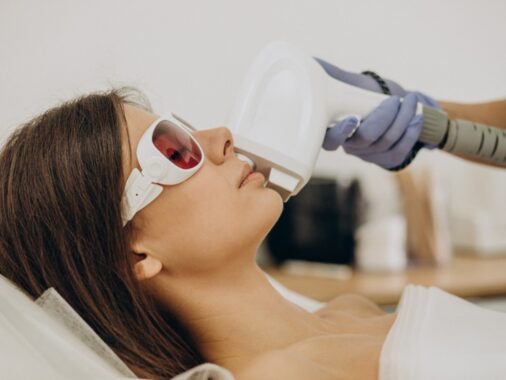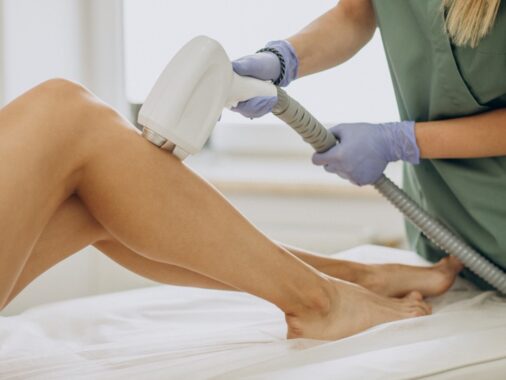Due to their similar appearance, age spots and liver spots are two prevalent skin disorders that frequently confuse individuals with a lack of knowledge. However, despite their visual resemblance, they have distinct causes and effects on human body. In this comprehensive article, we will explore the relationship between age spots and liver spots, delving into the underlying causes and the effects they have on the skin. By the end of this article, you’ll have a better grasp of these two skin disorders and how to tell them apart.
What Are Age Spots?
Age spots, also known as solar lentigines or sunspots, are flat, brown, or grayish patches that typically appear on areas of the skin that have been exposed to the sun over time. They are most common in individuals over the age of 55 to 60, but they can occur at any age based on the weather and geographical location. Age spots are not a sign of a critical health condition, but they can be bothersome from an aesthetic perspective.
Causes of Age Spots
Age spots develop as a result of prolonged exposure to the sun’s ultraviolet (UV) radiation. The primary causes include:
UV Radiation: The sun emits UV radiation, which damages the skin’s DNA and accelerates the production of melanin. This excessive melanin production can lead to the development of age spots. But it is not a disease, it’s very common in people from different countries and zones.
Aging: As the skin ages with time, it becomes less efficient at repairing itself. This makes it more susceptible to the effects of UV radiation, resulting in age spots on a human face.
Effects of Age Spots
Age spots are generally harmless, but they can affect a person mentally and lose their confidence. The effects of age spots include:
Cosmetic Concerns: Age spots are primarily a cosmetic issue. They can be unsightly and make the skin look older than it actually is and more darker.
Increased Risk of Skin Disorder: Although age spots themselves are benign, they can indicate prolonged sun exposure and an increased risk of developing skin disorders in the future.
What Are Liver Spots?
Liver spots, also known as seborrheic keratoses or senile lentigines, are also brown or black spots that appear on the skin. Unlike age spots, liver spots are not necessarily associated with sun exposure and UV rays. They are more common in aged people individuals and can vary in size and shape.
Causes of Liver Spots
The exact cause of liver spots is not well understood. However, they are believed to be influenced by factors such as:
Genetics: A family history of liver spots can raise your chances of getting them.It comes naturally as we grow up.
Aging: Liver spots are more common in older individuals, and their development may be related to the aging process and its quite natural symptoms.
Effects of Liver Spots
Liver spots are generally benign and do not pose a health risk. However, they can have various effects, including:
Aesthetic Concerns: Like age spots, liver spots can be a cosmetic concern. They can affect a person’s appearance and self-esteem and change facial expression and colour.
Differentiation from Other Skin Conditions: It’s essential to distinguish liver spots from other skin conditions, such as moles, as this differentiation is crucial for proper diagnosis and treatment.
Distinguishing Age Spots from Liver Spots
Differentiating age spots from liver spots can be challenging because they share a similar appearance. However, several key characteristics can help distinguish between the two:
Color: Age spots are generally brown or reddish, while liver spots are often darker, appearing black or very dark brown.
Location: Age spots are more likely to appear on areas of the skin exposed to the sun, such as the face, hands, and shoulders, while liver spots on the face are very common though they can occur on any part of the body like feet, hand no matter whether is exposed to the sun or not.
Age of Onset: The age spot comes later but the liver spot comes at any stage of our life. It can be found even in children.
Texture: Liver spots are often raised and have a rough, scaly texture, whereas age spots are flat smooth, and aligned with the body.
Family History: Liver spots may be more likely to occur in individuals with a family history of the condition as a genetic disorder.
Prevention and Treatment
Both age spots and liver spots can be managed and treated effectively. Prevention and treatment options include:
Sun Protection: To prevent age spots, use sunscreen with a high SPF, wear protective clothing, and avoid excessive sun exposure. For liver spots, sun protection can also help minimize their appearance but the ultimate solution is laser therapy.
Topical Creams: Over-the-counter or prescription creams containing ingredients like hydroquinone, retinoids, or alpha hydroxy acids can help fade age spots over time.
Cryotherapy: Freezing age spots with liquid nitrogen is a common treatment option. Currently, it’s highly recommended by dermatologists.
Laser Therapy: Laser treatments for liver spots can be effective, targeting the pigmentation and removing the spots and more faster treatment process than others.
Chemical Peels: Chemical peels can help improve the appearance of age spots by removing the outer layers of skin.
Cryotherapy and Excision: Liver spots can be removed using cryotherapy (freezing) or through surgical excision.
Frequently Asked Questions
Are age spots and liver spots the same thing?
Age spots and liver spots are not the same thing. While they may appear identical, age spots are caused mostly by sun exposure and harmful UV rays, whereas liver spots have no clear origin but are linked to heredity and aging.
Are liver spots permanent?
Liver spots can be permanent if left untreated. However, they can be treated effectively with various methods, such as cryotherapy, laser therapy, or chemical peels. All are effective based on the conditions.
Can I prevent age spots and liver spots?
Age spots can be avoided by avoiding excessive sun exposure, applying sunscreen, and wearing protective clothing. Liver spots may be more challenging to prevent, but sun protection can still help minimize their appearance and over time there are positive chances to remove them.
Are age spots and liver spots painful?
Age spots and liver spots are typically painless. They are mainly cosmetic concerns, and any discomfort or pain should be evaluated by a healthcare professional.






